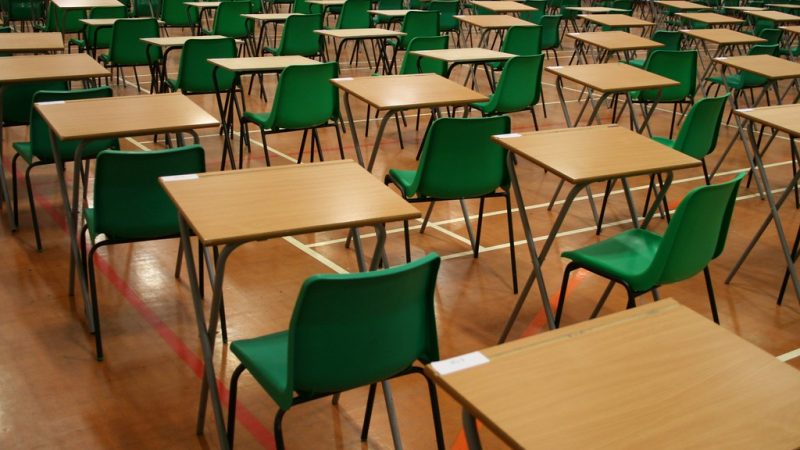The government’s promise to level up education has been described as being ‘dead and buried.’

This year’s GCSE results have laid bare the crippling North-South divide in England. In London, 28.4 percent of students achieved the top – level 7 – 9 – grades. In the North East, just 17.6 percent of students attained such grades, marking a gap of almost 11 percent.
Top grade achievement was significantly down from last year, 22 percent from 26.3 percent, when the grading system was more generous, taking Covid disruption into account. Meanwhile, the attainment gap between students from poorer households and their more affluent peers, persists. 46.7 percent of students attending private schools achieved the highest grade, compared to less than 20 percent in state schools.
The gap between those getting top results in the South East compared to northern regions has been increasing every year since 2017. While 24.8 percent of students achieved the equivalent A grade in London, in Yorkshire and Humber 18.3 percent of pupils achieved top grades, rising to 18.4 percent in the West Midlands, and 18.5 percent in the East Midlands.
Bridget Phillipson, shadow education secretary, said this year’s GCSE results show how the government’s promises to level up education are ‘dead and buried.’
A lack of investment on catching up students who missed out on lessons during the pandemic, has been attributed to the drop in top grades this year. Chris Zarraga, director of Schools North East, said such support is vital in improving the opportunities for young people within the region. “However, it is clear that significant challenges remain, with education recovery policies too London-centric,” he added.
Geoff Barton, general secretary of the Association of School and College Leaders (ASCL), shares similar concerns, saying young people from disadvantaged backgrounds had suffered a disproportionate hit from the pandemic and the cost-of-living crisis.
“It is likely that the outcomes for many of these young people will be affected by these factors and this may also impact on the results of schools which serve disadvantaged communities. The government has failed to grasp the gravity of this issue,” he said.
The results echo similar educational inequalities uncovered by this year’s A-level results, which showed a widening gap between advantaged and disadvantaged pupils.
Analysis of the results by the Sutton Trust, Britain’s leading social mobility charity, found significant regional differences in attainment, as well as between state schools and private schools.
Rebecca Montacute, head of research and policy at the Sutton Trust, said: “This year’s results are a major milestone for this year group, after years of disruption throughout key parts of their education due to the pandemic, followed quickly by the cost of living crisis – with the lowest income young people hardest hit.
“Perhaps unsurprisingly, given the huge challenges this cohort has faced, initial data show some worrying trends for educational inequality, with potential long-term implications for social mobility.”
Gabrielle Pickard-Whitehead is a contributing editor to Left Foot Forward
To reach hundreds of thousands of new readers we need to grow our donor base substantially.
That's why in 2024, we are seeking to generate 150 additional regular donors to support Left Foot Forward's work.
We still need another 117 people to donate to hit the target. You can help. Donate today.



